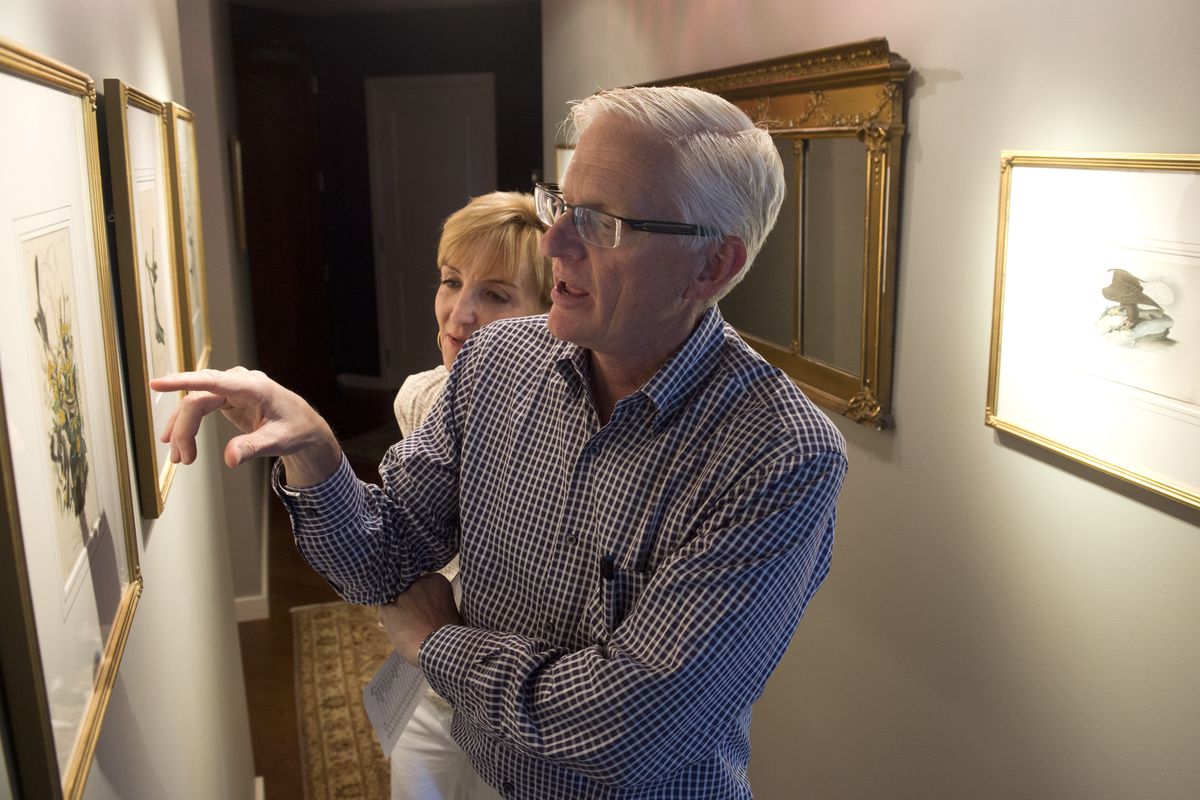Audubon prints on display at Dodson’s as fundraiser

An exhibition of hand-painted bird prints by John James Audubon opening Friday was 25 years in the making, the collector’s interest sparked in childhood.
Tom Colgrove, now a senior vice president at Clearwater Paper in Spokane, grew up in a part of Pennsylvania rich with historical significance, within walking distance of the farm where the famous naturalist lived. Colgrove attended Audubon Elementary School in the town of Audubon, and during his childhood visited Audubon’s home – a museum by then – and the surrounding property, which had become a bird sanctuary.
Now Colgrove owns about 40 of the meticulous and vivid “octavo” prints Audubon sold to subscribers in the 1840s. Many hang in the downtown condo he shares with his wife, Susan Colgrove, overlooking the Spokane Falls and a few hang in their home in Georgia.
Most of the prints will be exhibited starting Friday at Dodson’s Jewelers in a fundraiser for three local environmental groups.
Representatives from the three groups will be at the event, said Penn Fix, president of Dodson’s. The 4,000-square-foot store converted bays and wall spaces formerly dedicated to china and crystal into gallery space and has been selling work by regional artists for about three years, Fix said.
This show is a little different: The Audubons are not for sale. They’ll stay up for two weeks at Dodson’s, where the public is invited to view them.
Self-taught, Audubon painted birds as they appeared in nature, Colgrove said. A “buzzard” catches a rabbit, an osprey catches a fish, a hook-beaked shrike impales another bird on a thorn before digging into its prey.
Audubon’s decision to paint birds as they appeared in nature made him an outsider among scientific illustrators, who painted them in profile and in stiff poses.
“Oh, by the way, he shot a lot of birds,” Colgrove said. “People think Audubon Society, conservation and all that stuff. John James Audubon shot a lot of birds. He’d shoot them and sketch them, and he’d have a board and he’d pin them in different poses.”
Audubon, born in Haiti in 1785, lived in France before moving to Pennsylvania, where his father wanted him to learn to run a farm on an estate known as Mill Grove. He drew in his spare time for years before embarking on travel in 1820 to gather specimens and draw birds for his first publication. Selling his prints by subscription, he published “The Birds of America” on large, “double elephant”-size sheets of paper.
Audubon followed up with a smaller – and more affordable – series that would include more birds, most of them newly discovered in the Western U.S. Prints in the Royal Octavo Edition were made on sheets about one-eighth the size of the double elephants, measuring about 6.5 by 10 inches.
Colgrove collects first-edition prints from the 500-bird octavo series, which subscribers in Audubon’s day bound together into books.
Some of the surviving prints are more colorful and in better condition than others, Colgrove said. They range in value from about $400 to $4,000; prints with brighter colors and more than one bird tend to be more popular and pricier. Prints of “more famous” birds, such as herons and robins, tend to be worth more than those of lesser-known birds.
Susan Colgrove also grew up near Mill Grove.
Her interest in bird-watching has grown with their collection of Audubons, she said. She remembers seeing an eagle carry a fish in its talons, then pick the meat from the bones. From the couple’s years living in Wisconsin, she remembers seeing a great white pelican, which fly from Florida to lay their eggs in the north.
Susan Colgrove said she admired the delicacy and fuzz of a thistle in Audubon’s print of a goldfinch. In a picture of an eagle and its prey, she admired the softness of the catfish’s belly.
Some prints are more colorful than others. A pink flamingo pops.
“I love the color,” she said.